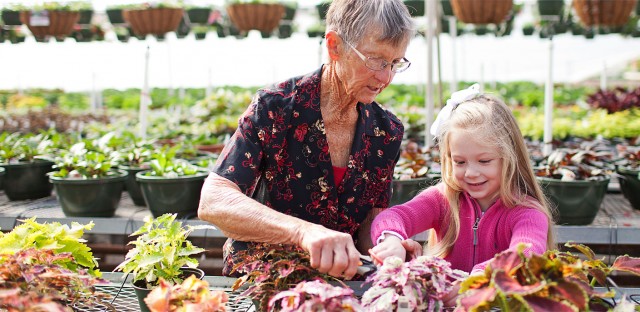All About Poinsettias
Christmas is not complete without the beauty of a poinsettia to polish off the holiday decorating. The poinsettia has been in the commercial trade since its arrival to the United States in 1829. This holiday favorite is native to southern Mexico and was introduced to the United States by Joel Roberts Poinsett, the first US Ambassador to Mexico. These plants were originally used by the Aztecs to make dyes used in clothing. The milky sap of the poinsettia was also used to make a fever remedy. The poinsettia is also known as the Flower of the Holy Night, and has significance at Christmas because legend tells it was given to the Christ Child on Christmas Eve.
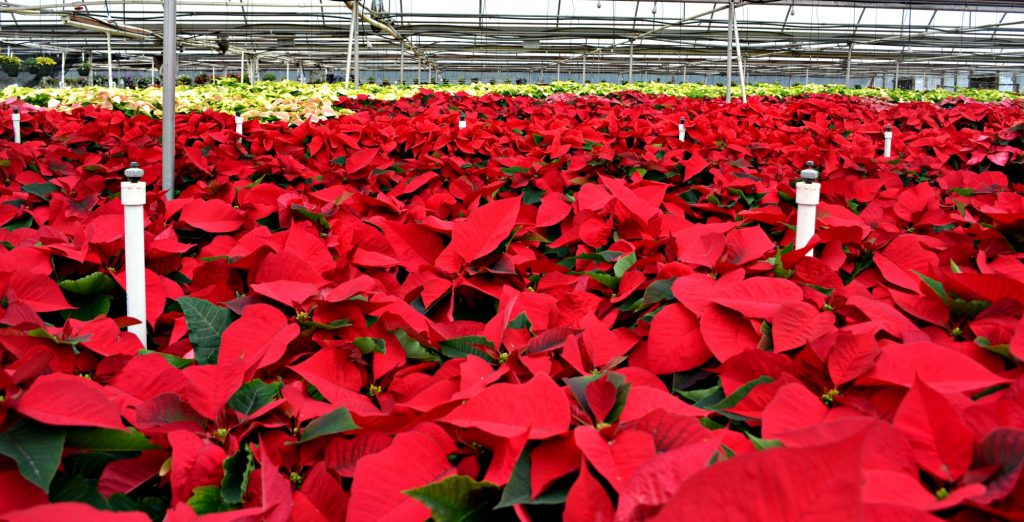
Poinsettias have historically been known for their brilliant red, white, and pink color, but they are now available in many colors to fit every homeowners decorating scheme. Ongoing research has yielded new introductions that vary greatly from the old standby plants. New colors that are now available include plum, burgundy, salmon, yellow, and numerous “splotched” varieties. One of Fairview’s new favorites is ‘Cortez Burgundy’ which produces a rich, bold, red wine color bract. ‘White Glitter’ is also proving to be a favorite among homeowners for its incredible white and pinkish speckling affect on bright red leaves.
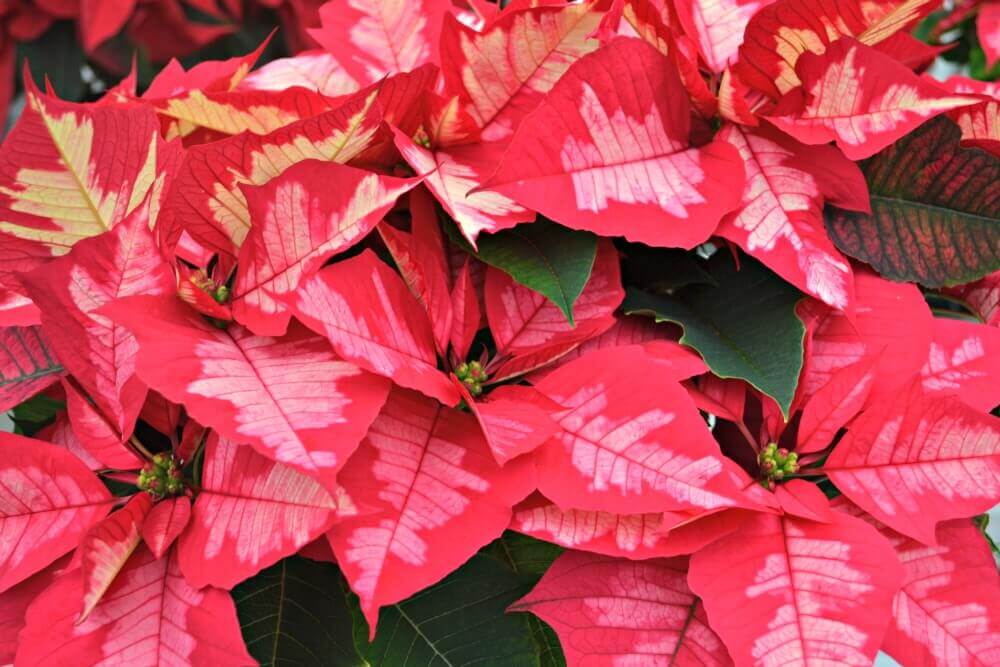
Colors are not the only changes being made with poinsettias. Over the past few years, new introductions such as ‘Winter Rose’ and ‘Carousel’ have brought twisty and curvy foliage to consumers. The foliage of these two varieties differs from the normal plants by their contorted and wavy appearance. These two varieties bring different textures as well as vivid red colors into the home.
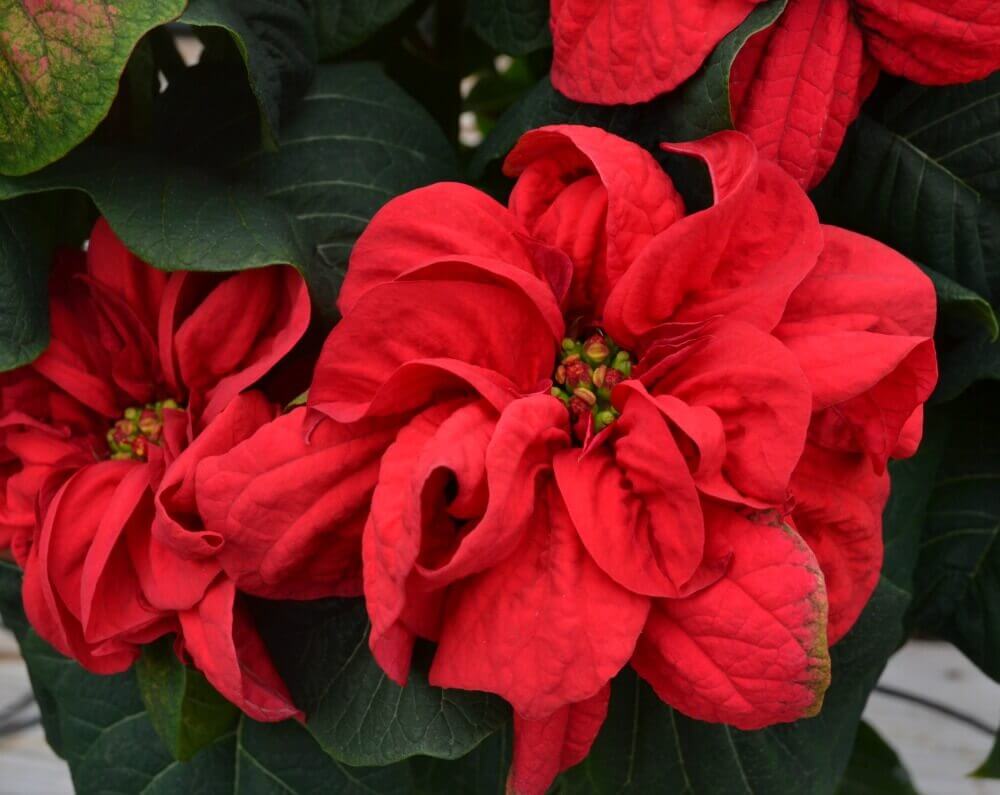
Poinsettias are relatively easy for homeowners to grow and enjoy during the holiday season. The process of selecting which variety suits you best may be the most difficult part.
Once the perfect poinsettia has been selected, it needs to be placed in bright indirect light, but not direct sunlight. Room temperatures between 68-72 degrees should be provided and the soil should never dry out. The soil should feel moist to touch, but not saturated. Extra care should be taken to make sure that plants in decorative foil or containers are not sitting in standing water. Poinsettias should be kept away from exposures to drafts, and hot or cold temperatures.
By following these directions, poinsettias should provide beauty for many months.
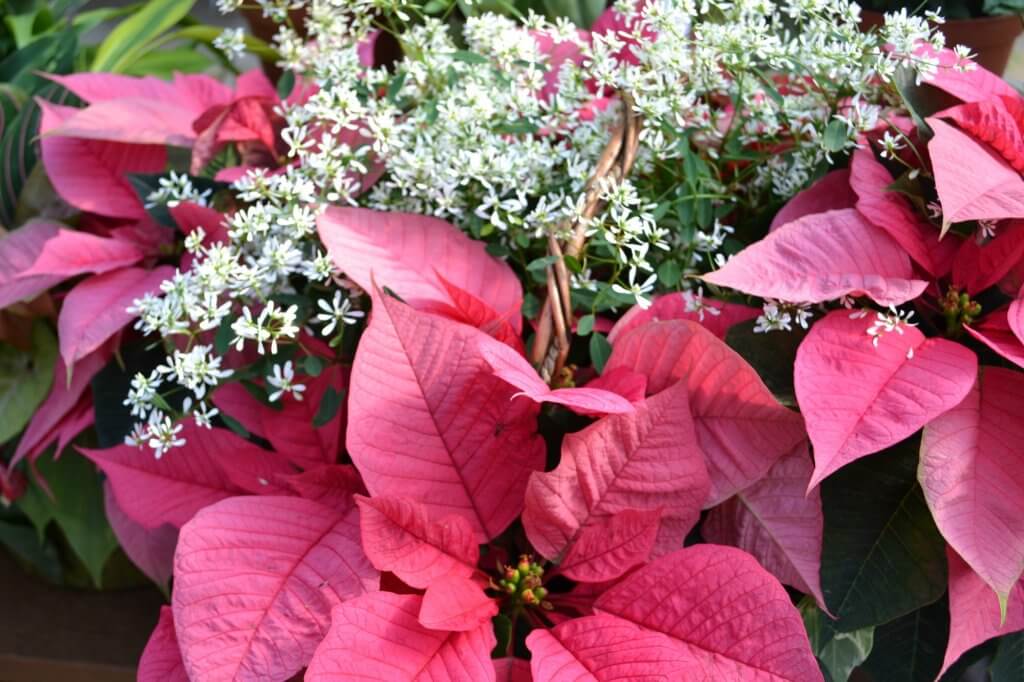
There once was a widespread belief that poinsettias were poisonous to humans. This belief has since been proven wrong. Scientific evidence demonstrating the poinsettia safety is ample and well documented. In 1992, the poinsettia was included on the list of houseplants most helpful in removing pollutants from indoor air. The poinsettia adds beauty to your holiday décor and cleans the air you breathe inside your home.
Poinsettias, freshly cut firs, holly boughs, and mistletoe all welcome the coming holiday season. The smell of sugar cookies permeates from the oven and the sounds of Bing Crosby fill the air when families come together for Christmas. What a truly wonderful time of year. This holiday season, as you enjoy your home and company; add a little beauty for every one to enjoy by selecting poinsettias for indoor decoration.

